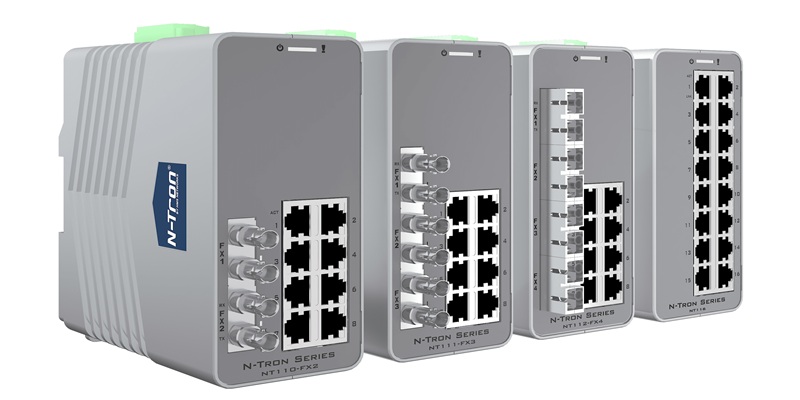Schedule a Call Back
Top six tips to reduce energy consumption in industries
 Industry News
Industry News- Jul 30,22

Critical industrial processes are often power-hungry. They require large amounts of energy and power supply equipment that can safely deliver the energy an industrial facility needs. Without an effective power management system, businesses can easily open themselves up to safety hazards, equipment failure or high operating costs.
The right energy management practices can help businesses avoid power outages, extend equipment life spans and minimise energy consumption. This will cut operating costs and the company’s carbon footprint.
1. Monitor energy use in real-time
Real-time data management is often an invaluable tool for managers that want to develop the best possible understanding of how a business, facility or asset uses energy. This can also determine how patterns in power consumption may change over time or with the implementation of different efficiency initiatives.
Businesses can use various data-gathering technologies to capture real-time energy consumption. A comprehensive smart metering system can collect information on a particular facility’s usage in real-time and store it in the cloud for later reference.
Real-time data on energy consumption is also a good resource for measuring policy outcomes. Before-and-after information on power use in a particular facility, building or area can show if a specific policy or initiative has actually improved local energy efficiency.
Real-time data is particularly valuable, as it can help managers and data analysts spot inefficiencies or patterns that may have otherwise been undetectable with less comprehensive information.
2. Make data available to decision-makers
Data is only valuable if it’s easily accessible by the people who need it most. Without the right planning, it’s not unusual for important information — like from a facility’s smart metering system — to become trapped in a data silo. It will only be available to certain individuals or departments, preventing it from providing value across the organization.
Have a plan for making energy data easily accessible to key decision-makers. The faster employees and executive staff can access this information, the quicker they can make changes to equipment performance to improve efficiency.
3. Use the right technology
Power management or enterprise energy management (EEM) systems are an increasingly popular solution for businesses that need to manage the consumption of industrial equipment and facilities. These systems help manage power distribution systems and the assets connected to them.
These systems in industrial facilities often simplify power management, minimize hazards, streamline incident response and optimize asset energy consumption.
The system relies on a network of connected devices and sensors that collect data from key points across the facility’s power infrastructure. A combination of smart metering devices and those with embedded metering capabilities, like variable speed drives (VSDs), generally lay the foundation for this data-collection network.
A centralized data collection, analysis and power management system like this can make it much easier for managers, technicians and executive staff to monitor and manage a facility’s energy use.
4. Invest in asset maintenance
Costs can be massive when key power infrastructure equipment fails. For example, transformer failure often means expensive repairs and costly downtime.
Supply chain uncertainty can make equipment failures even more painful. Essential components may be difficult to source on a moment’s notice, resulting in more downtime and lost revenue.
An effective preventive maintenance plan can help a business prevent failure and ensure key assets are performing as efficiently as possible. Regular maintenance and inspections make it less likely that issues with power infrastructure will catch a business off-guard.
5. Ensure energy management plans are holistic
Limited-scope projects can be useful in determining the practicality of a particular policy change or initiative, but may not make a significant difference in business energy consumption. Often, businesses benefit the most from holistic plans that tackle power use problems across the company and combine short- and long-term changes to energy management.
For example, one plan may combine easy-to-implement energy-saving initiatives like lighting upgrades or the use of process automation with projects that need more time to deliver a return on investment. Something like this could apply to the adoption of carbon-free energy sources.
Adopting a non-holistic plan may make it harder to create organizational change and lay the foundation for long-term projects that will deliver significant payoffs. Change would only come after an extended period of implementation.
6. Partner with people and organisations that can provide expert advice
Not every business has the in-house experience and knowledge needed to develop an effective energy management plan. However, companies with the right understanding can benefit from looking outside the organization for second opinions, advice and best practices.
Partnering with organizations like energy services companies (ESCOs), industry subject matter experts, the U.S. Department of Energy or members of the Association of Energy Engineers (AEE) can provide a business with invaluable information and advice on optimizing energy consumption.
How businesses can optimise their power management system
The right practices can help any business reduce the energy consumption of key industrial assets. Power management systems can help with monitoring energy use, improving data accessibility, investing in maintenance and partnering with energy experts can all boost efficiency at an industrial facility.
About the author:
Emily Newton is a tech and industrial journalist and the Editor-in-Chief of Revolutionized Magazine. Subscribe to the Revolutionized newsletter for more content from Emily.
Related Stories

4 Low-VOC Industrial Paints That Deliver High Performance in Tough Environments
Volatile organic compounds (VOCs) - contaminating air and water - can affect health. In this article, Emily Newton explores four high-performance, low-VOC industrial paint options that reduce harmfu..
Read more
ABB India Upgrades Peenya Plant, Adds 25% VSD Capacity
The new line features a combination of advanced robotics and digital production monitoring technology, handling production of large batches with speed and precision and providing real-time visibilit..
Read more
Rare crystal shapes yield stronger 3D-printed metal parts
Quasicrystals, which were previously considered a myth, are now replicable for large-scale industrial applications. Stakeholders must support investments in 3D printing technologies and continued re..
Read moreRelated Products

Integrated Electric Gripper S Series
IBK Engineers Pvt Ltd offers a wide range of integrated electric gripper S series.

Geared Electric Motors
Delco Fans Pvt Ltd offers single phase capacitor run and three
phase geared Instrument motors, totally enclosed face/foot mounted.

“Kusam-Keco” Partial Discharge Acoustic Imager - Model - Km-pdai
‘Kusam-Meco’ has introduced a new “Partial Discharge Acoustic Imager Model KM-PDAI.















